Best Bread Machine Cheese Buns: Based on a Grandkid Survey
Sneak Preview: These Bread Machine Cheese Buns are a pillowy soft, and fluffy cheese-infused dinner roll (thanks to the Tangzhong technique) with a chewy, cheesy crust. Mix these in a bread machine, but you can make these rolls without one. See the recipe notes for details.
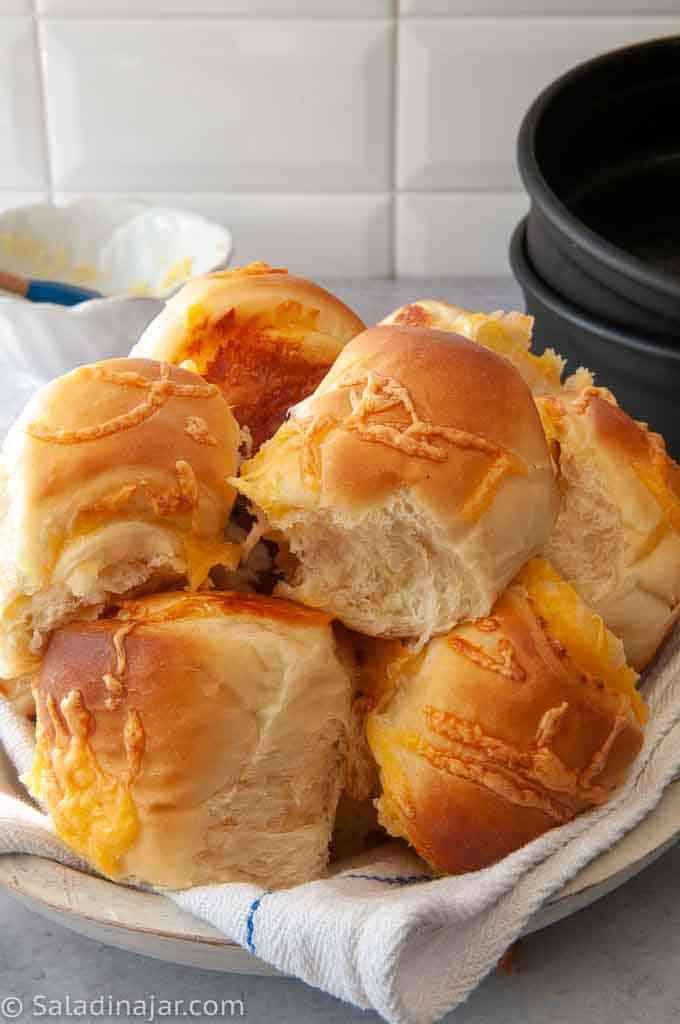
As an Amazon Associate, I earn from qualifying purchases.
My family thinks these Cheddar cheese buns are the best dinner rolls on the planet. They always win extra points with my youngest grandson. I wish you similar results.
Four Reasons To Try This Recipe
- Nothing beats unrolling hot-out-of-the-oven cheese rolls to find melty Cheddar cheese combined with soft, flaky homemade bread. Crispy cheese bits form where the cheese meets the pan. They bake up crunchy on the top, adding another layer of texture and taste.
- Eat these rolls with dinner or use them as slider buns with ham, turkey, or mini burgers to make sandwiches.
- The Tangzhong method is the secret to the fluffiness. If you don’t recognize that word, it’s the technique used to make Japanese Milk Bread or Hokkaido Milk Bread. Keep reading to find out more. (Don’t worry. It’s simple.)
- Make these rolls with your bread machine using the DOUGH cycle. No bread machine? No problem. Use a stand mixer or do everything by hand. See the recipe notes for details.
Are you curious about what else my family asks for? The following recipes are all popular: My Favorite Cinnamon Rolls, Bread Machine Monkey Bread: A Savory Version, and Crusty French Bread Mixed in a Bread Machine.
Happy Bakers Speak Up
“These cheese buns turn out absolutely wonderful. The recipe and instructions are so precise and easy to follow.
I also tried stuffing them with roasted red peppers and garlic butter along with a little bit of cheese and the result was delicious. My family just cannot keep their hands off of them.”—SHILPY
Can I Use a Stand Mixer Instead of a Bread Machine To Make These Rolls?
The answer is a resounding YES! This recipe is designed for a bread machine. I think a bread-making machine does the best job of kneading the dough.
However, you can use a stand mixer or make them by hand with a wooden spoon. See the recipe notes for directions.
The Tangzhong Technique
(Skip this section if you are not into the details. Just follow the recipe.)
The Tangzhong technique is a simple modification that improves homemade bread’s texture, taste, and freshness window.
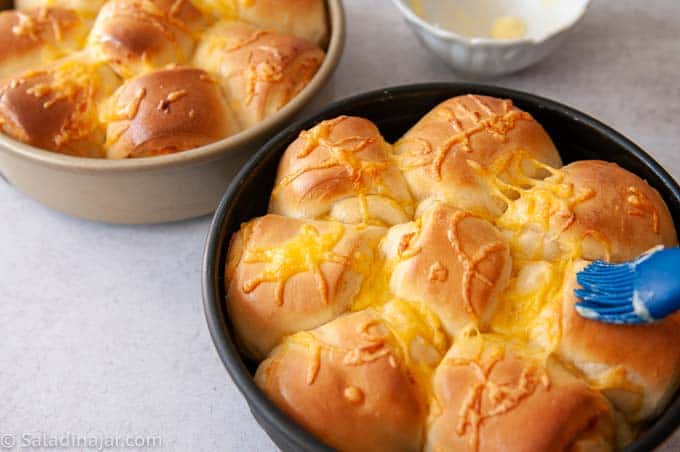
A small amount of flour is whisked into milk or water and heated to thicken the mixture. This “magic pudding” can be made quickly in a microwave. Add more liquid to cool down the temperature immediately. Pour into your bread machine along with the remaining ingredients.
This process makes it possible to use less flour and more liquid. In other words, the percentage of hydration is higher.
If you like the results of the Tangzhong technique, I also use the same method in these recipes: A Tangzhong Bread Machine Recipe for the BEST Dinner Rolls Ever and Terrific Tangzhong Cinnamon Rolls from your Bread Machine
Ingredients and Substitutions
- FLOUR: The recipe calls for unbleached wheat flour. You can substitute bread flour, but you will probably need slightly less flour.
If you want whole wheat flour, I recommend you use no more than 1 cup. Make up the rest with unbleached flour.The recipe includes weight measurements as well as cups. Weighing the flour is much more accurate.- If you don’t have scales available, carefully use a fork or spoon to fill a measuring cup before leveling the top. Using your measuring cup to scoop up the flour will usually result in using too much flour. Bye-bye, fluffy rolls!
- YEAST: Instant yeast or bread machine yeast (same thing) is always easier, so that’s what I use. However, if you can’t get it or don’t have it, use regular active dry yeast instead.
- There is no longer any need to dissolve it, according to King Arthur Baking.com. Add 1/4 teaspoon of active dry yeast to compensate for the slower-rising capability.
- EGGS: I always use the large size. If you have a different size, compensate with more or less liquid.
- SALT: The recipe is written for table salt or sea salt. Add an extra 1/4 teaspoon if using Kosher salt.
- MILK: Any milk you have on hand will work. However, the higher the fat content (whole milk is the best), the richer and moister your rolls will be. The milk does not need to be warmed. The friction of the bread machine paddles will warm the dough in a hurry.
- BUTTER: Don’t fuss about setting the butter (or eggs) to warm up to room temperature.
- Here’s a tip: 💡Chop refrigerated butter finely with a dinner knife using the butter wrapper as your working surface. Place the chopped butter into the pan with the other ingredients. The butter will melt into the dough at just the right time.
- CHEESE: Mild Cheddar cheese is my first choice. It’s less greasy as it melts. Pick a semi-hard cheese if you want to try a different variety of cheese. Gouda, Swiss, or Pepper Jack come to mind. You could also mix in a hard cheese like grated Parmesan cheese.
- Speaking of Parmesan cheese, if you like cheese in your bread, don’t miss my recipe for Spinach Bread with Parmesan for a bread machine.
- Speaking of Parmesan cheese, if you like cheese in your bread, don’t miss my recipe for Spinach Bread with Parmesan for a bread machine.
Tips For Making Successful Cheddar Cheese Bread Rolls
1. Be hesitant to add more flour.
When this dough is perfectly kneaded and hydrated, the dough will stick to the side of the bread machine pan, then pull away cleanly. You may see dough underneath the paddle, and that’s OK. This dough will be smooth, supple, and tacky when touched. It should not be dry-looking or bouncing off the walls.
Environmental conditions (some beyond your control), flour characteristics, and user technique can create situations where you will need to add liquid or flour to make your dough j-u-s-t right.
The more experience you have, the less you will need to add extra flour. Experience is the best teacher when it comes to bread-making. Eventually, you can feel it in your bones when the dough needs adjustment.
2. Spray the bread pans with an oil/flour mixture like Baker’s Joy.
This is especially important if your pans do not have a high-quality non-stick finish. (USA pans do not require this step.) Cheese can stick to the pan like glue.
3. Cut the dough into strips with a pizza cutter before making rolls.
It’s quick! Otherwise, use a large kitchen knife or a bench scraper.
4. A silicone baking mat is my preferred work surface when shaping the dough.
Throw it into the dishwasher when you’re done. Be careful when cutting the dough; don’t cut the mat by pressing too hard. I’ve been doing it for years without a problem.
5. Sprinkle a few shreds of cheese over the tops of the buns before you bake them.
They will look more enticing and also let people know what’s inside.
Can I Make These Rolls Ahead of Time?
Yes. Make the dough, let it rise, and shape it into rolls. Refrigerate. When ready to bake, allow the rolls to come to room temperature and rise until almost double before baking.
Because the recipe employs the Tangzhong technique, these rolls will remain amazingly fresh for another day or two or three after baking.
How To Assemble Bread Machine Cheese Buns
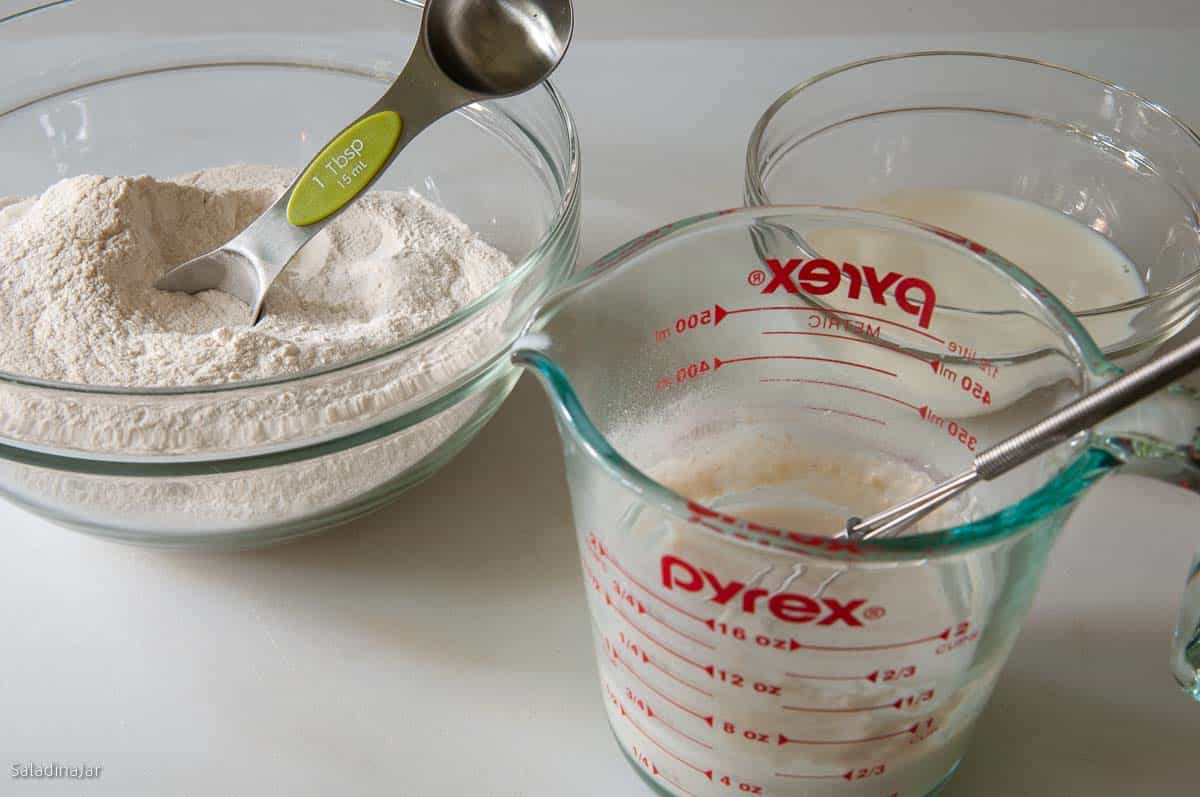
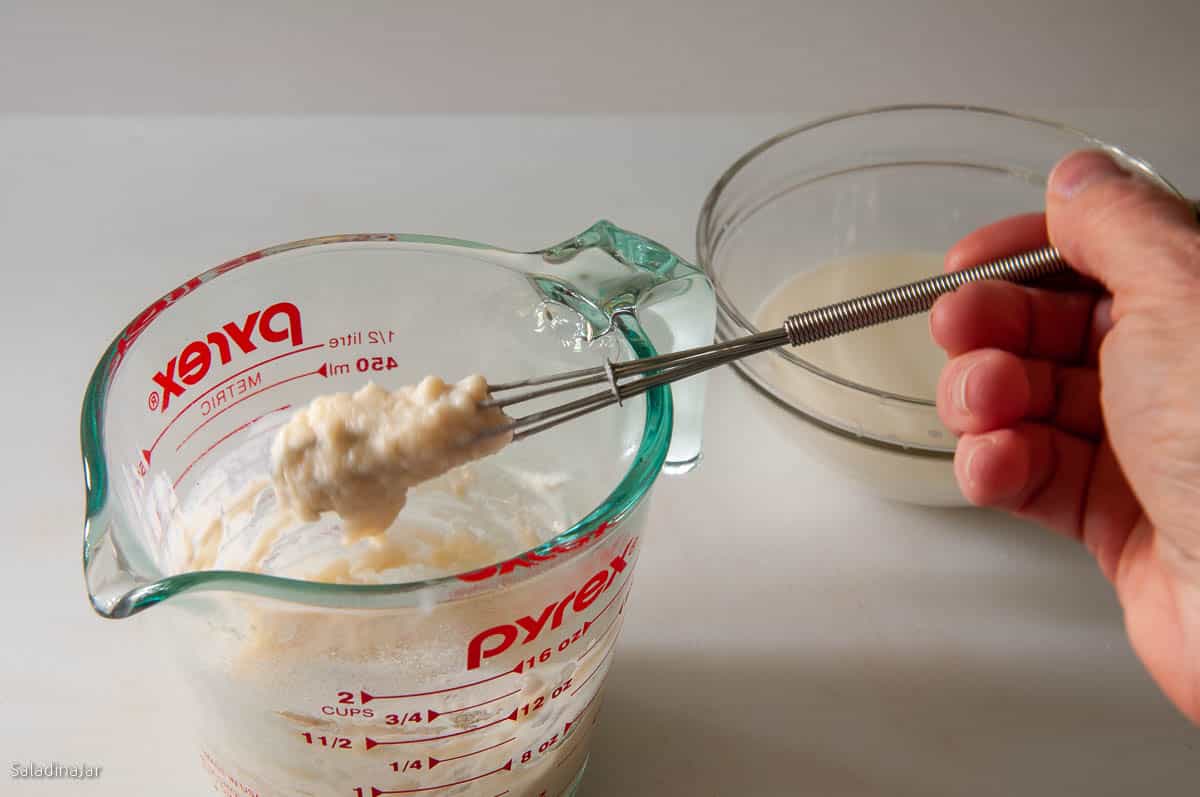
Don’t worry about a few small lumps–they’ll come out in the wash. But if the paste cooks into a solid cake that is not stirrable, start over. (If you don’t have a microwave, heat the milk in a small saucepan over low heat. Whisk in flour and cook until the mixture gets thick.)
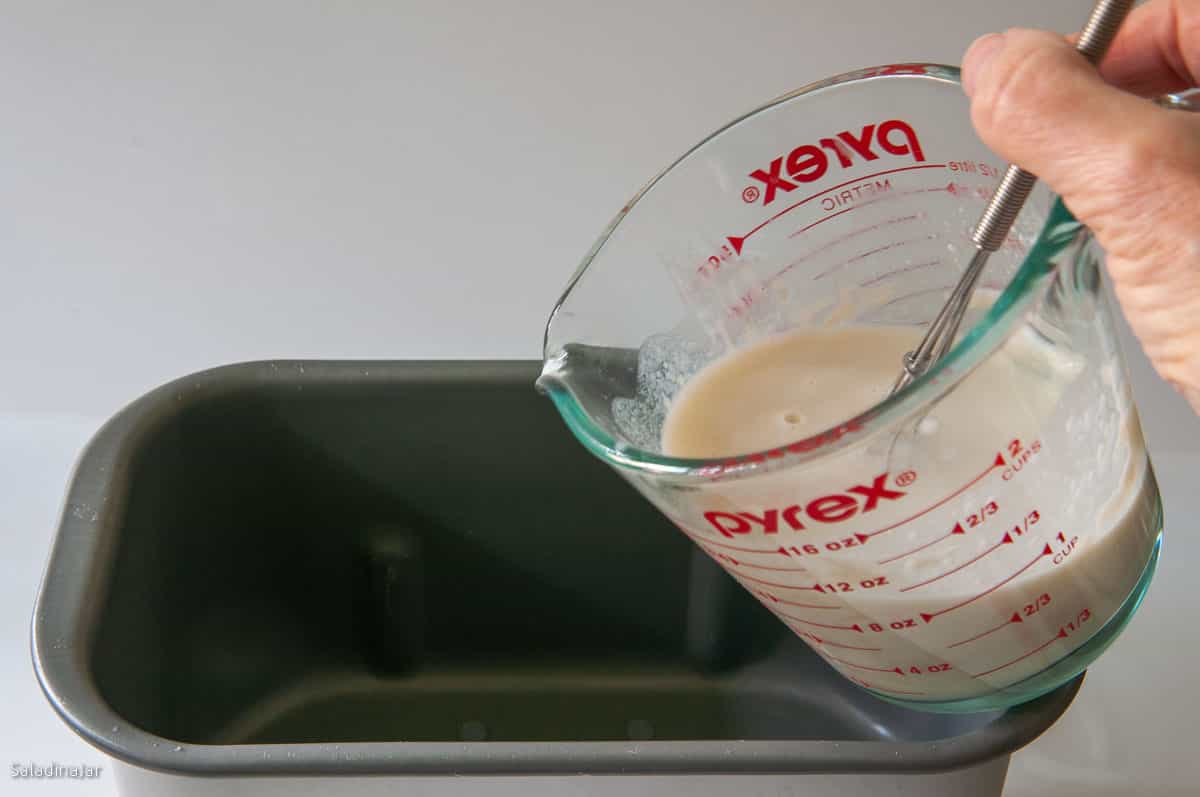
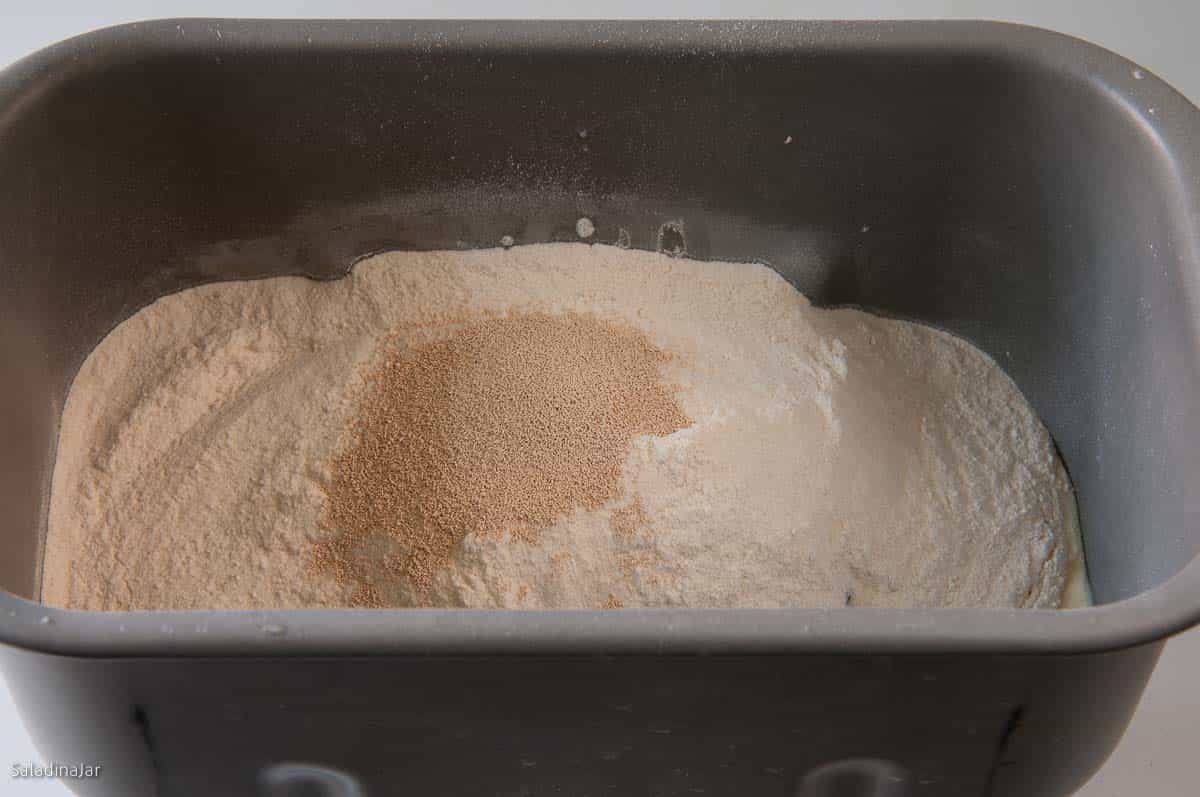
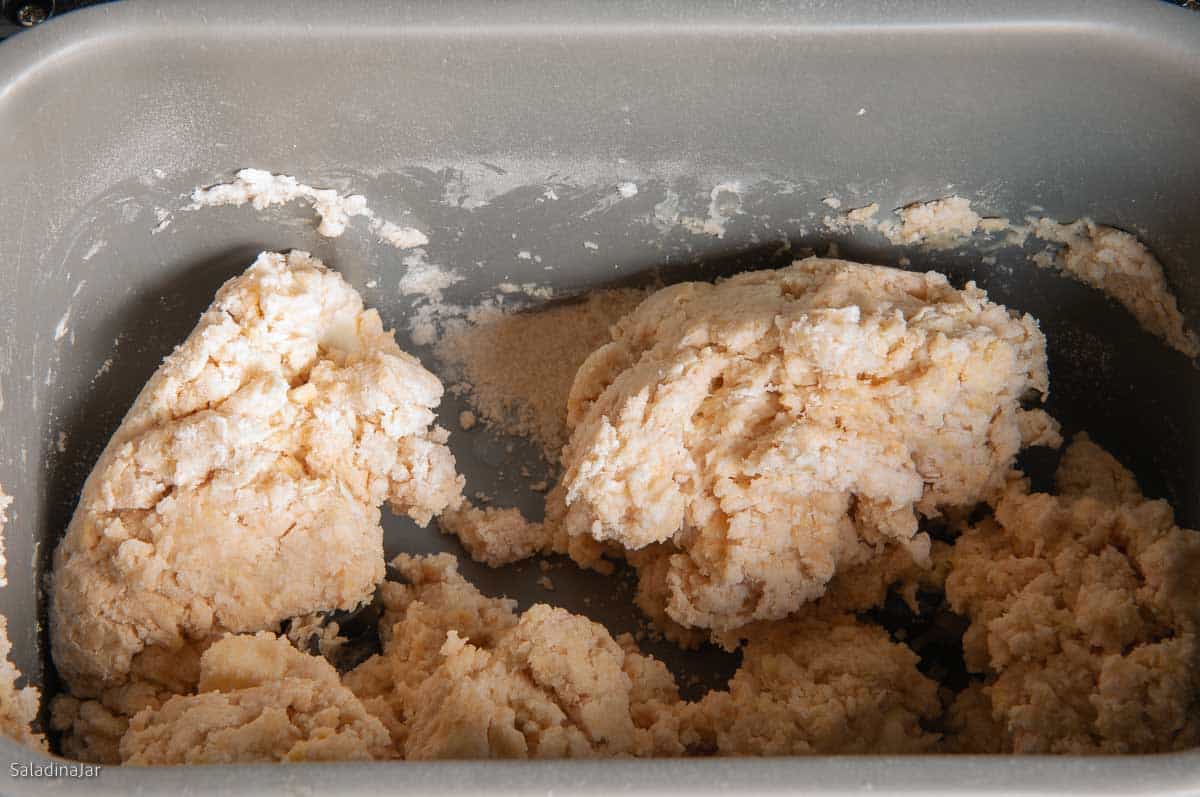

The dough should be smooth and elastic. Watch the dough knead; it should stick to the side briefly, then pull away cleanly. The dough should be tacky and clean the pan. If yours doesn’t look like this, look at this post for instructions on fixing your dough. It’s not too late.
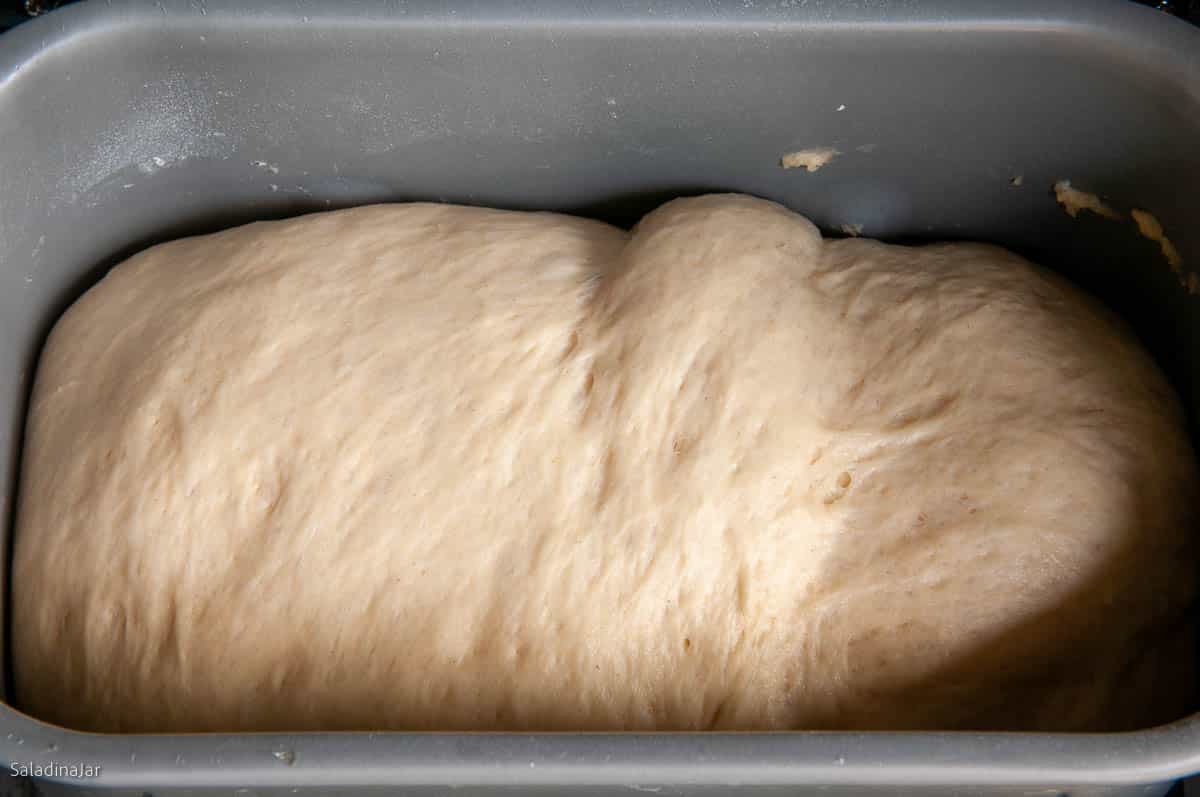
How To Shape Cheese Buns By Hand
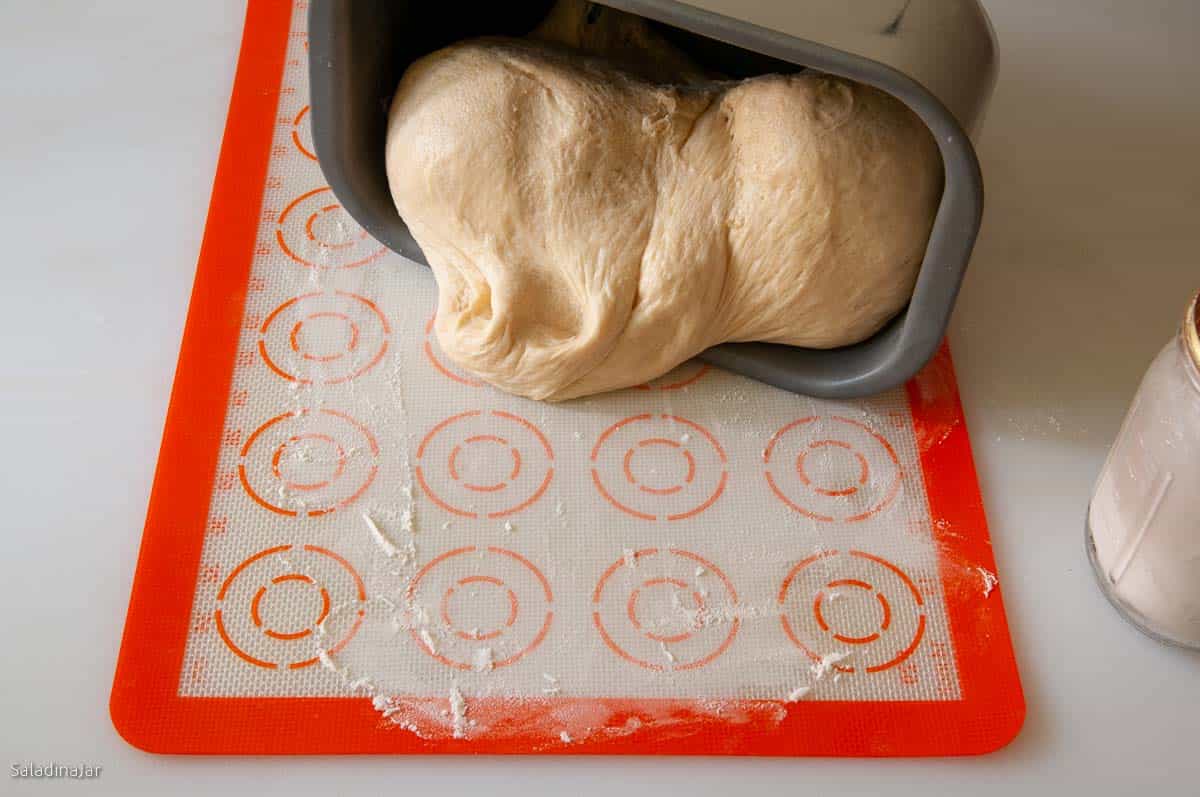
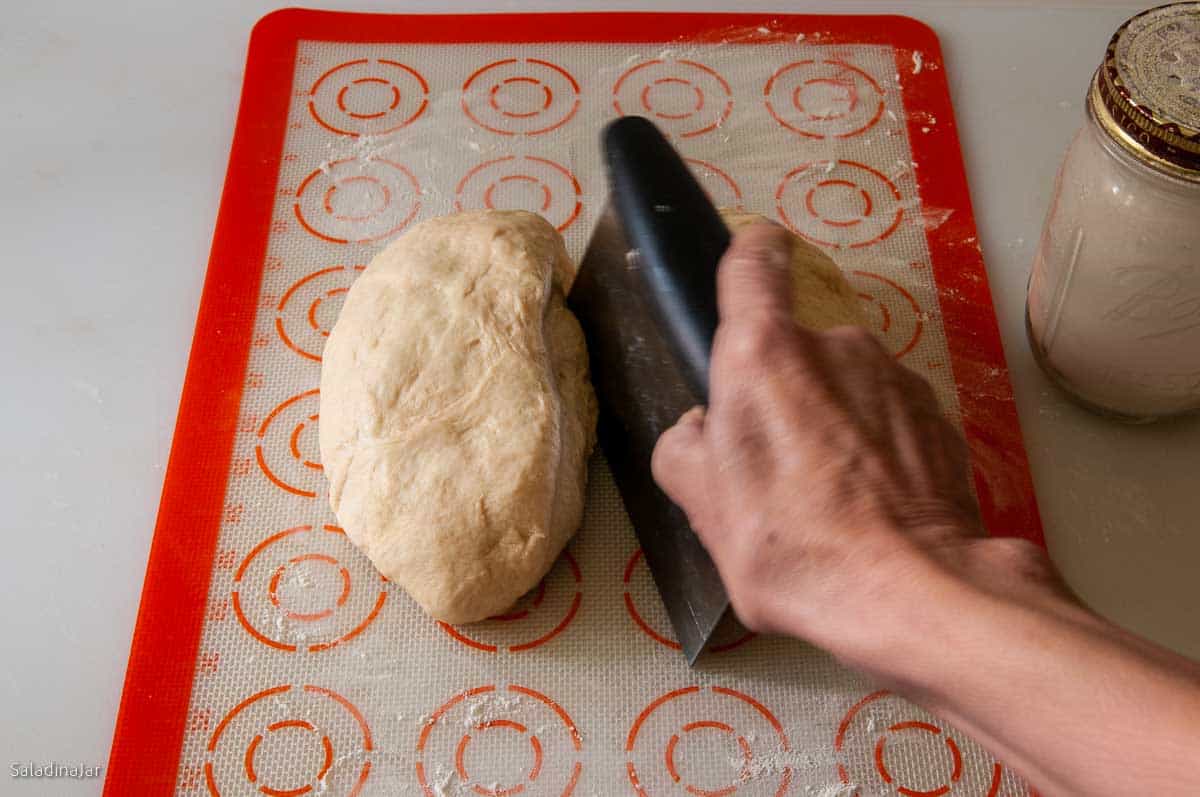
I like to use a silicone mat because clean-up is easy. Shake it out in the sink and throw it in the dishwasher.
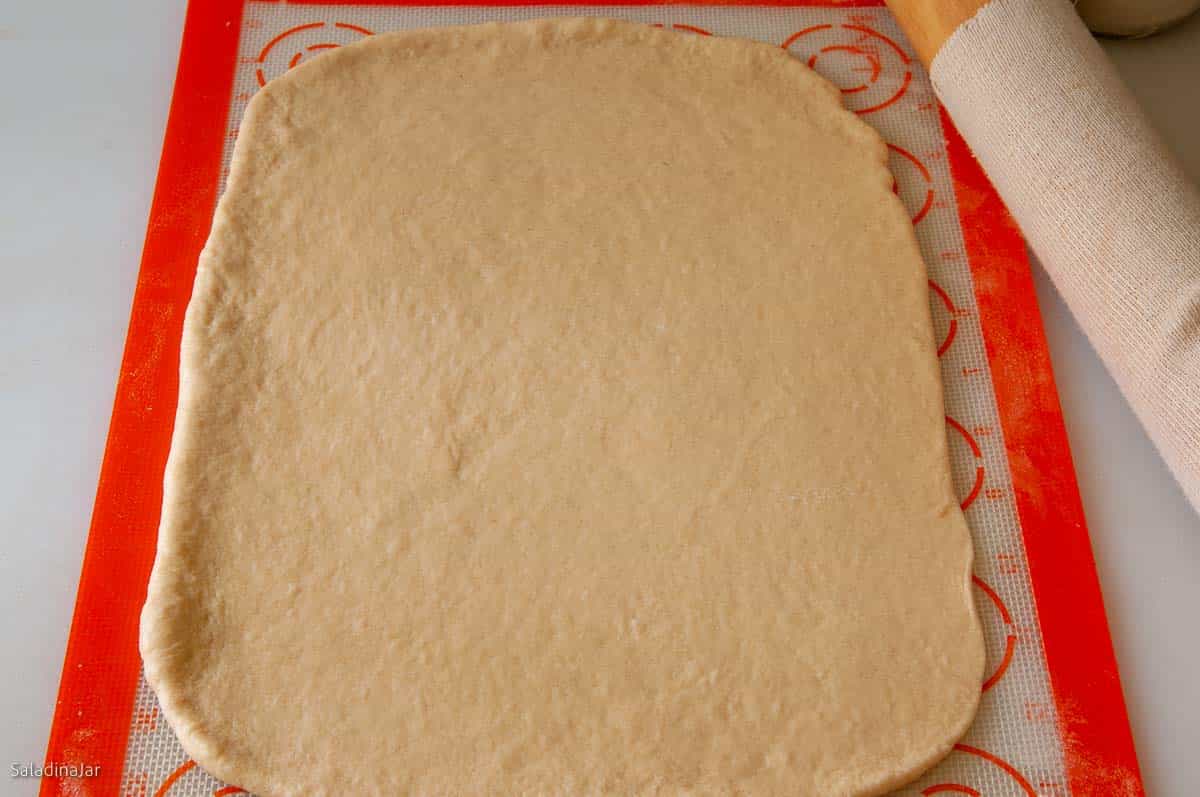
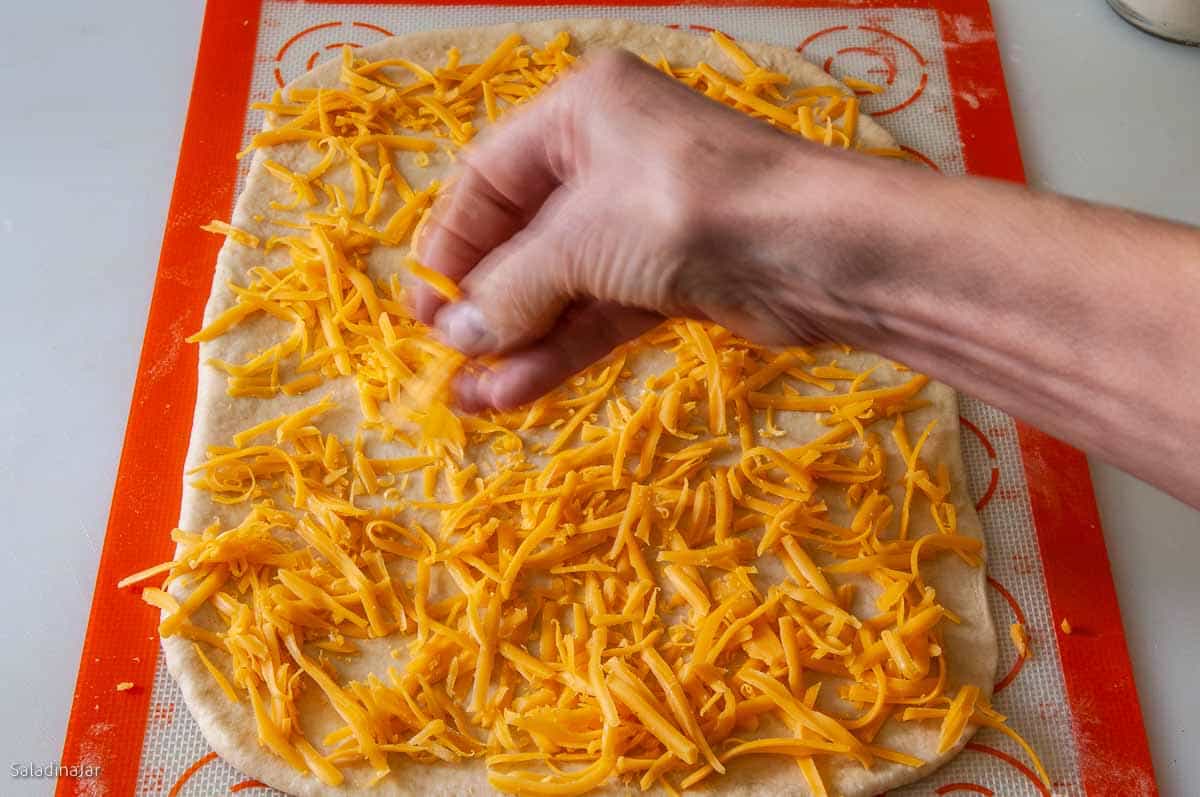
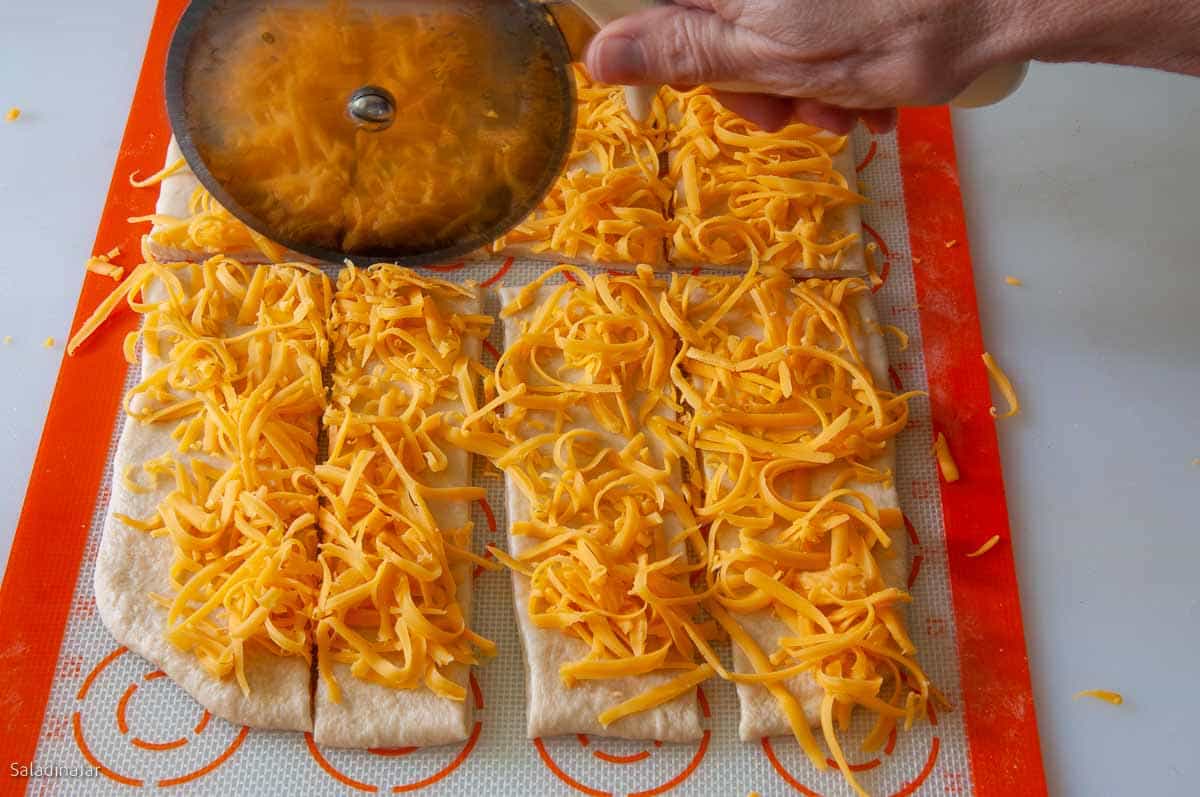
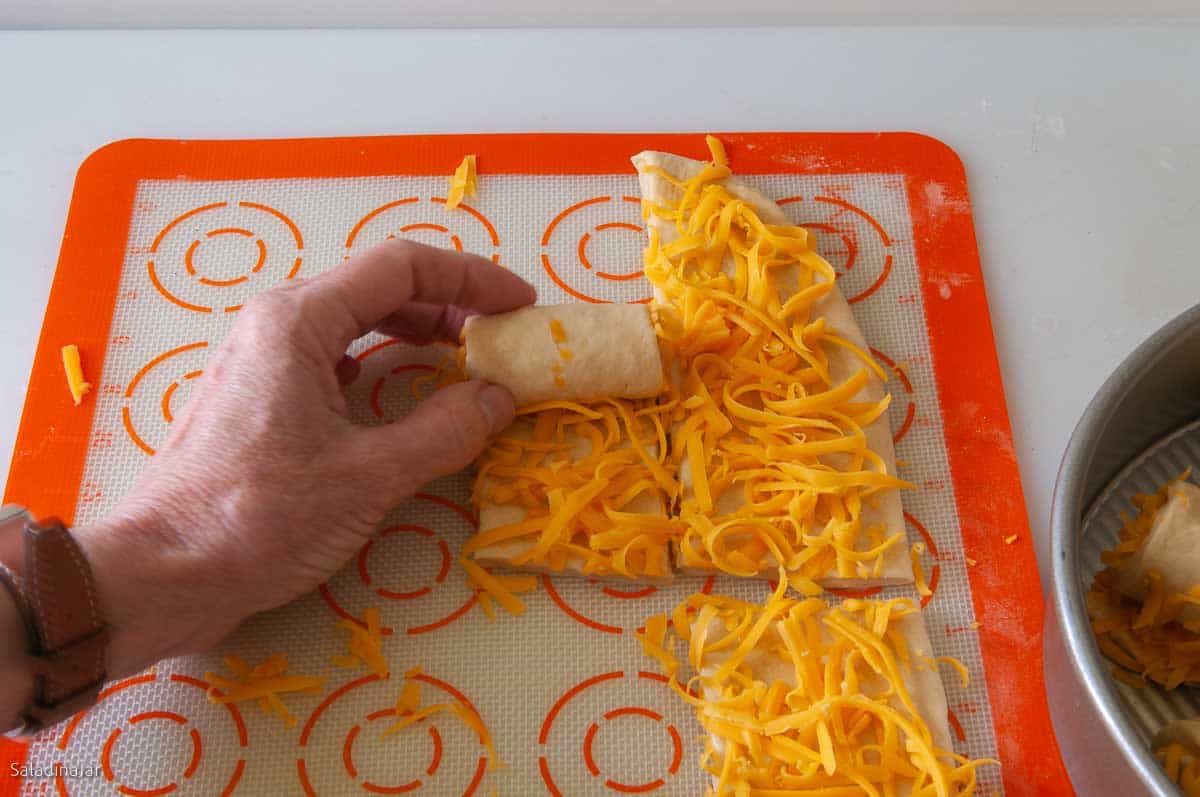
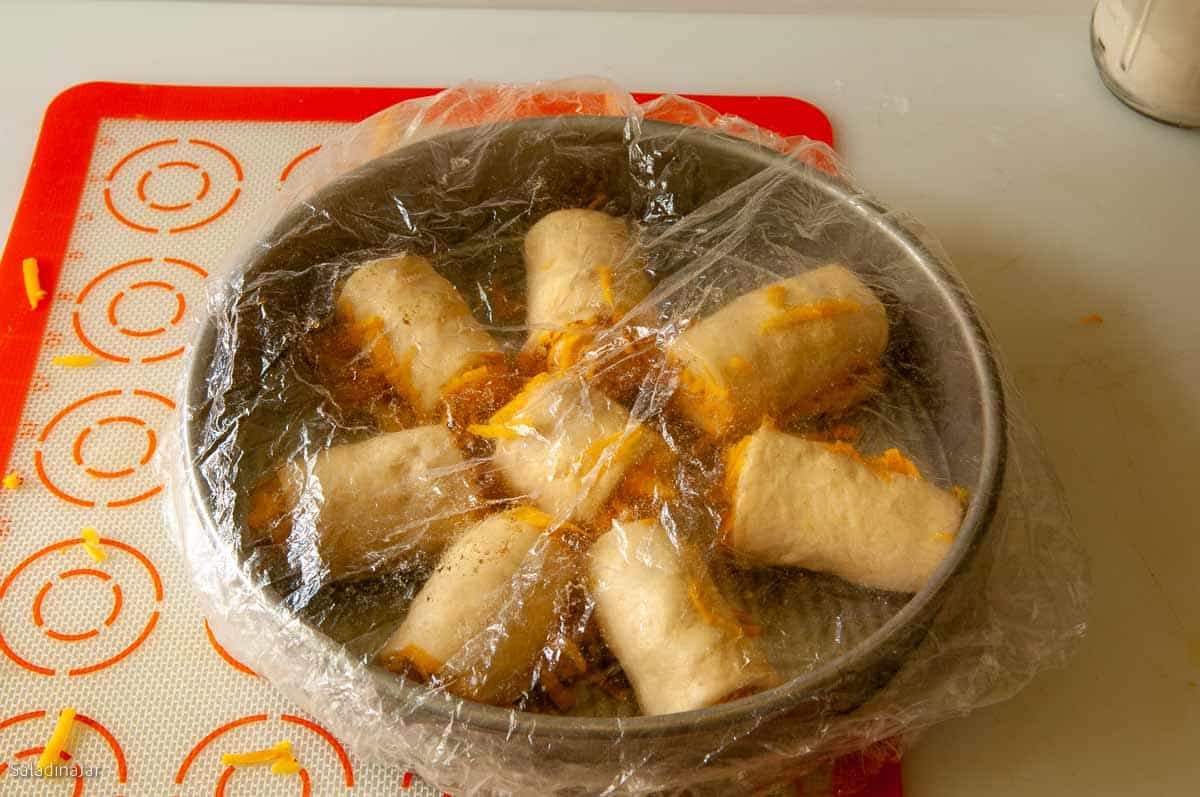
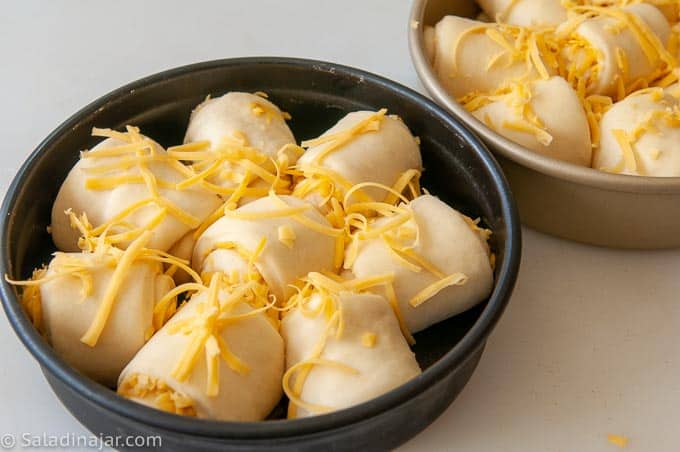
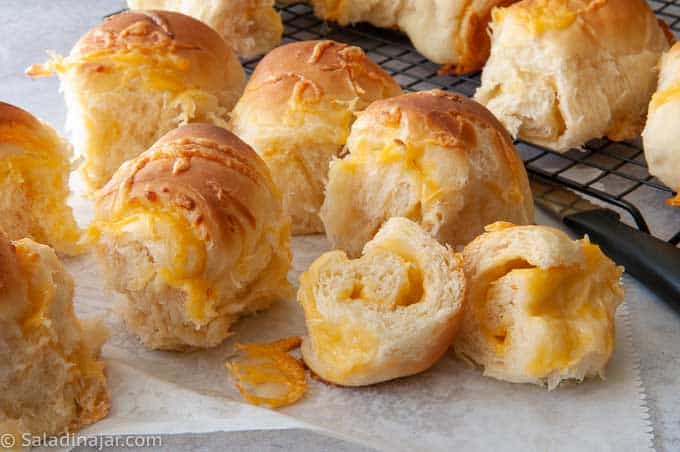
The internal temperature should reach 190˚F. Let the rolls cool on a wire rack to prevent soggy bottoms.
FAQ
Yes. Be sure to double-wrap them. Use within three weeks to a month for the best flavor.
Absolutely. Often, I make one pan with cheese and one without. It’s easy to do since you will roll out two dough rectangles. If you like, coat one rectangle with melted butter instead of cheese. I’ve made one pan of cheese buns and one pan of cinnamon rolls.
Yes. Instead of rolling the dough out thin, knead the cheese into the dough by hand. Portion the dough according to the size of buns you want. You can make sixteen small balls or eight large-size buns. Let them rise a final time. Smash the buns before baking so the rolls look like a burger bun. Bake as directed. Cut in half horizontally to use for sandwiches.
Parting thoughts: If you like these rolls as much as we do, the following recipes incorporate the Tangzhong technique: Tangzhong Cinnamon Rolls, and Japanese Milk Bread Dinner Rolls.
Recipe Help at Your Fingertips: For questions or suggestions, email Paula at saladinajar.com. If you need help, I’m happy to troubleshoot via email (faster than leaving a comment). Attach pictures and as many details as possible for the best advice.
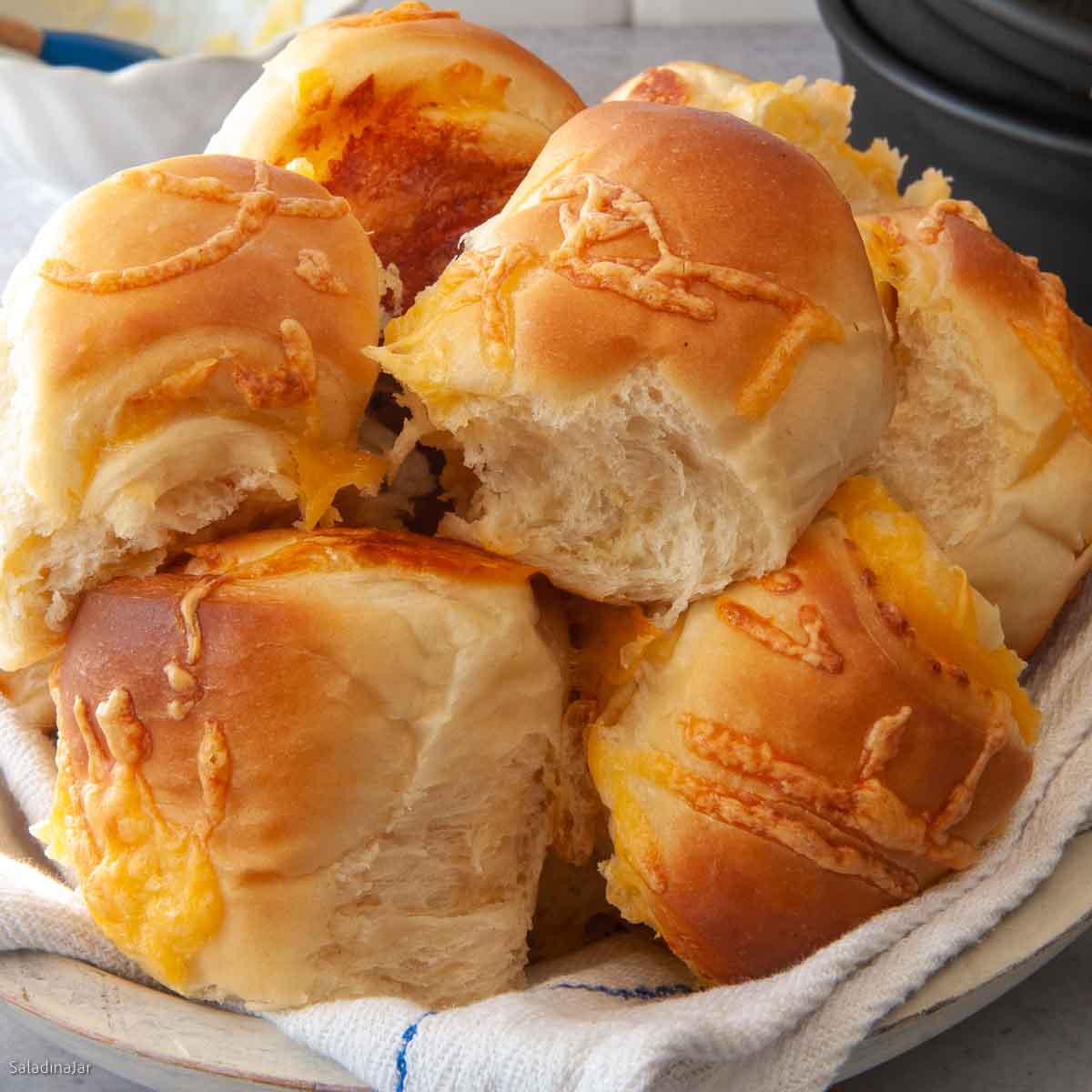
Cheese Buns Recipe–Bread Machine
Rate this recipe
(5 stars if you loved it)
Video
Ingredients
Tangzhong Paste
- ½ cup (113 g) milk divided
- 2 tablespoons (15 g) unbleached all-purpose flour
Dough
- ½ cup (114 g) cool milk
- Tangzhong paste from above
- 1 large (50 g) egg
- 1 tablespoon (14 g) heavy cream OR 1 egg yolk
- 2 tablespoons (24 g) sugar granulated
- 1¼ teaspoon (7 g) salt table or sea salt
- 4 tablespoons (56 g) butter cold, chopped
- 2¾ cups (330 g) unbleached all-purpose flour
- 2 teaspoons (8 g) instant yeast
- 2 cups (226 g) Cheddar cheese shredded (8 ounces)
Instructions
Making the Tangzhong Paste
- Measure ½ cup (113 g) milk into a 2-cup microwave-safe measuring cup or Pyrex bowl. Whisk in 2 tablespoons (15 g) unbleached all-purpose flour Cook on High in a microwave for 45-60 seconds (microwaves vary) whisking every 15 seconds until thickened like pudding.
Dough
- Add ½ cup (114 g) cool milk to the Tangzhong paste (cooked milk/flour mixture from above) and whisk energetically. It’s OK if there are still some lumps. They will disappear in the mixing process. Add to the bread machine pan.
- Add 1 large (50 g) egg ,1 tablespoon (14 g) heavy cream OR 1 egg yolk, 2 tablespoons (24 g) sugar , 1¼ teaspoon (7 g) salt , 4 tablespoons (56 g) butter, 2¾ cups (330 g) unbleached all-purpose flour , and 2 teaspoons (8 g) instant yeast to the bread machine pan and select the DOUGH cycle. Press “Start.”
- During the first minute, lift the lid to make sure the paddles are engaged and working correctly. Dough should start to clump and begin to form a ball.
- Recheck 12-15 minutes later to ensure the dough is the correct consistency. It should stick to the side, then pull away cleanly. If the dough is too dry it may thump against the side of the pan or ride around freely on top of the post. Add milk one tablespoon at a time. If the dough is too wet, impossibly sticky and won’t pull away from the sides, add flour one tablespoon at a time. Give the dough time to absorb the flour or milk between each addition.
- When the DOUGH cycle finishes, check to see if the dough has risen to double its original size. If so, remove it to a floured surface. If not, allow the dough to remain in the machine until it is doubled.
- While the machine is doing all the hard work for you, grate the cheese so it has time to come to room temperature.
Making and Baking the Rolls
- Remove the dough from the bread machine onto a floured surface. I like to use a silicone mat because clean-up is easy (dishwasher).
- Divide dough in half. Form each half into a neat ball, flouring the surface as you work to prevent sticking.
- Use a rolling pin to roll one dough ball into a 12 x 9-inch rectangle.
- Evenly distribute half of 2 cups (226 g) Cheddar cheese over the top of the rectangle.
- Divide into 4 equally-sized strips lengthwise, then divide each strip in half across the width. You should have 8 total strips. Roll each strip starting from the outside ends.
- Place rolls into a greased (spray with Baker’s Joy for best results unless using USA pans) 8 or 9-inch pan in a spoke fashion.
- Repeat the shaping instructions with the other half of the dough.
- Cover the pans with tea towels or cheap shower caps and set aside to rise again until almost double. This will probably take an hour, plus or minus, depending on the room temperature.
- Preheat oven to 375 °F (190˚C) when you think the rolls are almost ready to bake.
- Place rolls onto the middle shelf of your oven. Bake for 14-17 minutes or until golden brown and the internal temperature reaches 190˚F (88˚C).
- Remove from the oven and allow to sit for about 5 minutes. Run a plastic knife around the edge to loosen any cheese stuck to the edge. Turn rolls out onto a wire rack for another 10-15 minutes. Their tops should be up so their shape is not affected. Brush all over with melted butter.
- Tip: If you leave rolls in the pan too long after baking, they will sweat and become soggy on the bottom.
Notes
- To make this recipe in a heavy-duty stand mixer: Add ingredients to the bowl in the same order. Turn on LOW to mix until all ingredients are moistened. Then, using a dough hook, turn the speed to 2 or 3. Continue beating/kneading until dough becomes smooth and elastic (about 5-10 minutes). Cover and allow to rise in a warm place. Deflate dough gently and shape as indicated in the recipe.
- If making by hand: Combine all ingredients into a shaggy ball in a large bowl. Turn dough out onto a floured surface. Knead with your hands until the dough becomes smooth and elastic. Kneading will likely take 10-20 minutes, depending on your experience. Place the dough ball into a greased bowl. Cover and allow to rise until double. Deflate the dough gently and shape as indicated in the recipe.
- Please note: If you only have active dry yeast, use 1/4 teaspoon more than called for in the recipe. It no longer needs to be dissolved first, but you can if you prefer.
Equipment
Nutrition
All images and text ©️ Paula Rhodes for Salad in a Jar.com

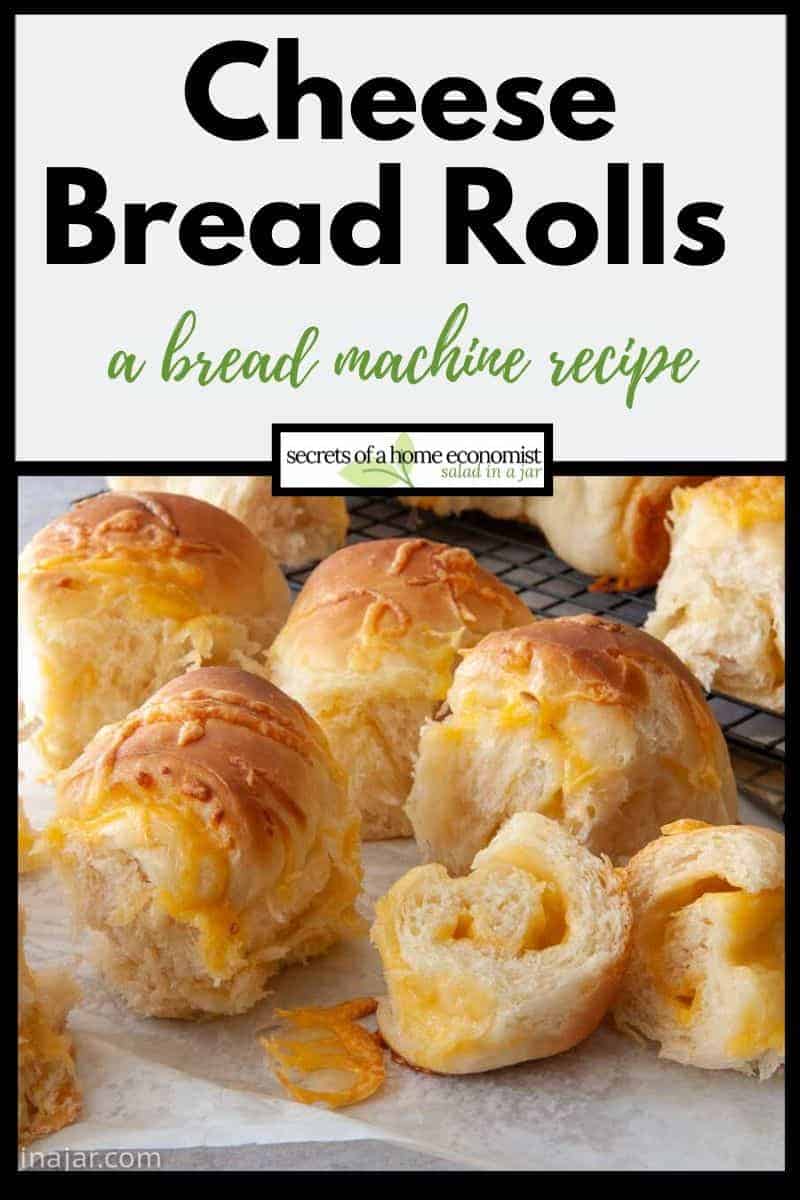

Paula Rhodes, owner
As a retired home economist, I created Saladinajar.com to share my belief that you don’t have to be a chef to find joy in creating homemade food worth sharing. Bread machines (used in an unconventional way), homemade yogurt, and quick microwave recipes are my specialty.